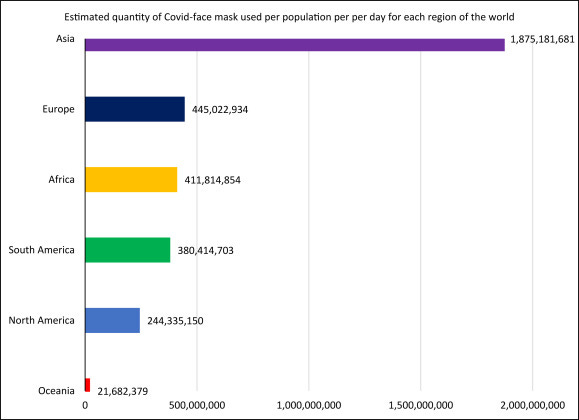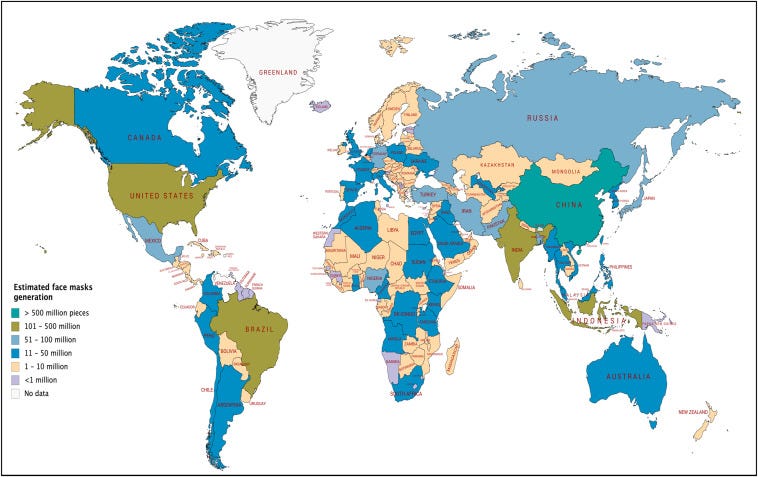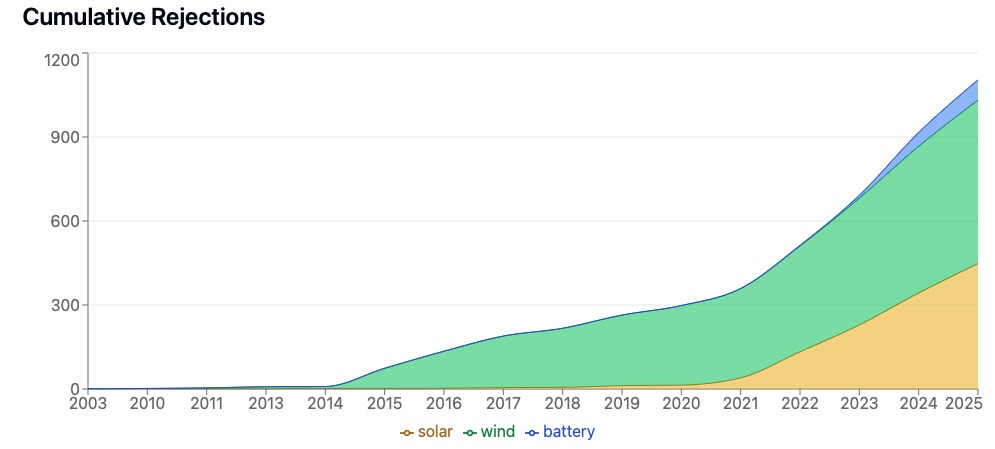News Round-Up: Toxic Masks Poisoning Ecosystems, Nepal's Social Media Crackdown, and Australia's Social Media Age Restricions Spark Surveillance Fears
Every week, the editorial team of Freedom Research compiles a round-up of news that caught our eye, or what felt like under-reported aspects of news deserving more attention.
Over the past week, the following topics attracted our attention:
COVID Masks’ Toxic Legacy: Microplastics Poisoning Humans and Ecosystems for Generations
Nepal’s Social Media Ban Sparks Protests and Global Concerns
DHS Hunts Cutting-Edge Biometrics for Border Screening
Australia’s Social Media Age Ban Sparks Surveillance Fears
Global Renewable Rejections Hit 1,104 as Communities Push Back
We are deeply saddened by the politically motivated murder of Charlie Kirk, and our heartfelt condolences go out to his family.
COVID Masks' Toxic Legacy: Microplastics and Endocrine Disruptors Poising Humans and Ecosystems for Generations
A Coventry University study revealed that unused disposable face masks, soaked in purified water for 24 hours, release microplastics and harmful chemicals like bisphenol B (BPB), an endocrine disruptor. BPB mimics estrogen, causing hormonal imbalances, infertility, and also damage to aquatic life. Researchers estimate that 128–214 kg of BPB was released into the environment from masks at the pandemic’s peak, contributing to widespread ecological and health risks, reports the Daily Mail.
The disposable face masks mandated during the COVID-19 pandemic have created a lasting toxic legacy. According to experts, up to 129 billion face masks were used monthly at the peak of the pandemic. The total number of masks worldwide between December 2019 and May 2021 reached 1.2 trillion.

This massive volume has resulted in masks littering landfills, polluting beaches and oceans. Because masks are made of almost non-degradable plastics like polypropylene, it takes approximately 450 years for them to decompose. Asia bore the brunt, with ~1.8 billion masks used monthly at the peak, compared to 244 million in the United States. China led with ~500 million masks discarded daily during that period.

In addition to polypropylene, masks release polyester, nylon, and PVC, which persist in the environment. Filtering masks (e.g., FFP2/FFP3) release 3–4 times more microplastic particles than surgical masks. Study co-author Dr. Anna Bogush warns, “The environmental costs of single-use masks are undeniable, as their microplastics and chemicals harm both humans and ecosystems.”
Microplastics, tiny particles (~100 micrometres, the thickness of a human hair), infiltrate water, air, and food, entering the bloodstream and accumulating in organs like the heart, lungs, and brain. Almost everyone encounters microplastics daily, with polypropylene common in food packaging, kitchen utensils, and toys. Studies link accumulated microplastics to cardiovascular disease, dementia, various cancers, respiratory issues, gut microbiome disruption, and infertility. Though polypropylene is considered relatively safe, it has been associated with asthma and allergies.
Nepal's Social Media Ban Sparks Protests and Global Concerns
Last week, Nepal’s government temporarily banned social media platforms like Facebook, X, and YouTube for failing to register or appoint local contact persons, triggering protests that led to at least 19 deaths, according to Euronews. This reflects a 14-year global decline in internet freedom, as reported by Freedom House.

Nepalese officials are advocating laws to monitor social media, emphasizing accountability for users and companies. Critics argue this constitutes censorship aimed at suppressing dissent. Kian Vesteinsson, Freedom House’s senior program officer for technology and democracy, acknowledges governments’ rights to regulate social media but cautions that Nepal’s blanket bans caused significant harm, cutting off millions from platforms that are essential for expression, business, and communication.
Aditya Vashistha, a Cornell University associate professor of information studies, notes this reflects a broader trend of controlling online narratives, seen also in India, Pakistan, and Bangladesh. “So this is nothing new — in fact, I would say this is taken from the playbook, which is now very established, of trying to control social media narratives,” said Vashistha.
Freedom House reports that global internet freedom has declined for 14 years. Internet freedom is considered a cornerstone of modern democracy, yet governments increasingly impose restrictions, citing child safety, cybercrime, and fraud. In Nepal, platforms are required to restrict topics like child and human trafficking—undeniably critical issues—but the same law also mandates restrictions on anonymous posting.
Governments punish dissent, detaining individuals for their political, social or religious views. While China consistently ranks as the “world’s worst environment” for internet freedom, Myanmar shared that title last year. India’s 2023 telecommunications law and Pakistan’s recent legislation further curb online freedom, justified as measures to combat misinformation and hate speech. Critics argue these laws lead to censorship in countries already grappling with significant digital freedom challenges.
DHS Hunts Cutting-Edge Biometrics for Border Screening
The U.S. Department of Homeland Security (DHS) has initiated a project to identify innovative biometric technologies for real-time traveler identification at border crossings, ensuring seamless cross-border traffic flow, according to Biometric Update. DHS invites the technology sector, universities, and laboratories to propose solutions most viable for real-world deployment.
The desired systems must capture biometric data from individuals standing, walking, or seated in vehicles. These systems should then compare the collected data against databases of trusted travellers and persons of interest, including criminals, immigration violators, and terrorism suspects. The systems must operate autonomously with minimal operator oversight, function effectively in challenging conditions such as low light or adverse weather, and integrate seamlessly into the existing infrastructure—all to “accurately verify claimed identities” in real time. Officials highlight the need for efficient tools to manage increasing traveller volumes while enhancing security, offering innovators a pathway to federal adoption.
However, existing initiatives like the CBP’s Simplified Arrival facial recognition system, which has expanded rapidly at airports and land borders, have faced growing scrutiny. Civil liberties advocates raise concerns about privacy, misidentification, and data retention. The current project’s focus on real-time database matching is likely to further fuel debates about the extent of biometric surveillance at borders.
Australia's Social Media Age Ban Sparks Surveillance Fears
In November 2024, Australia became the first country in the world to enact a law barring those under 16 from using social media platforms like TikTok, Facebook, Google, Snapchat, Reddit, X, and Instagram. Platforms were given until December 10, 2025, to develop robust age verification systems, with full enforcement starting then, according to Reclaim the Net.
eSafety Commissioner Julie Inman Grant mandates that platforms detect and deactivate underage accounts by using methods beyond self-declared age, such as facial scanning, ID uploads, or AI-driven tools. Non-compliance could incur fines up to $31 million USD. The government provides a self-assessment tool to determine which services fall under the Online Safety Amendment (Social Media Minimum Age) Act of 2024, but most major platforms are likely to be included. While standalone messaging apps may be exempt, social media messaging features, like Instagram DMs, are not.
The government insists the law is not an outright ban and balances child safety with privacy. However, platforms must block accounts failing age verification, prompting concerns from critics. Privacy advocates warn that such systems normalize mass data collection, risking broader surveillance and user profiling. Large-scale age verification often relies on intrusive methods, threatening anonymity for all users and undermining digital rights. Once infrastructure for scanning faces, verifying IDs, or tracking activity is in place, it could be repurposed by platforms or governments. Australia is firmly at the forefront of countries justifying mass surveillance under the guise of safety. Meanwhile, European Commission President Ursula von der Leyen’s Wednesday speech on September 10 indicated that Europe is closely monitoring Australia’s approach and considering next steps for potential underage social media restrictions in the EU.
Global Renewable Rejections Hit 1,104 as Communities Push Back
A wind project near Loppem, Belgium, was cancelled due to 882 resident objections and municipal opposition, citing noise, shadow flicker, and threats to the cultural heritage of Loppem Castle. This marks Belgium’s second wind project veto in two years, joining 1,104 renewable energy projects rejected globally since 2003, as tracked by Robert Bryce’s Renewable Rejection Database. The database logs 584 wind, 448 solar, and 72 battery project rejections.

Bryce’s database underscores the rising global resistance to renewable energy projects. Communities worldwide oppose the transformation of their farms, ranches, and towns into landscapes dominated by solar panels, wind turbines, and large-scale batteries, prioritizing local aesthetics, health, and environmental concerns.
In Ireland, two recent cases highlight this trend: an eight-turbine wind project in the Midlands, with 175-meter-high turbines, was rejected due to community protests and its excessive scale, while a 175-hectare solar farm in East Cork was denied for insufficient environmental and archaeological data. Since January 2025, the British Isles have seen 48 wind or solar rejections.

A study in Energy Strategy Reviews by researchers from the Research Institute for Sustainability found that while Germany’s energy transition has had broad support, “renewable energy projects often meet with local resistance.” Opposition often stems from concerns over landscapes, health, and environmental impacts, not ideological extremism, reflecting grievances against elites imposing projects without addressing local needs. The researchers argue this resistance signals democratic vitality as communities defend their interests.


